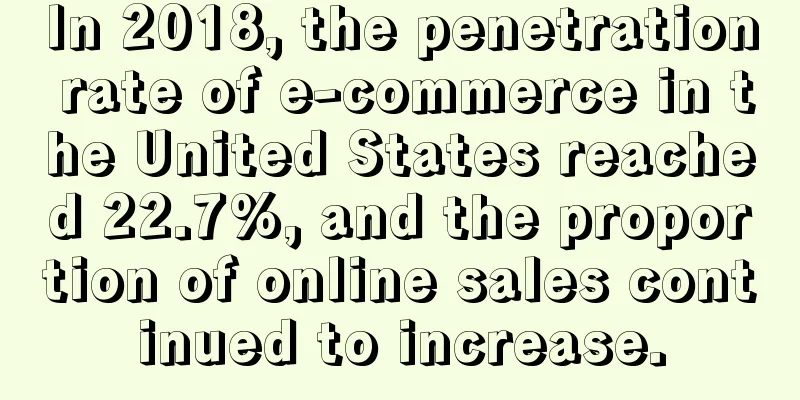When doing business on Amazon, be careful to avoid these traps

|
For Amazon sellers who have not encountered setbacks and are still achieving good sales results, this platform is not particularly difficult to operate. However, this is a long-term battle. Not encountering problems now does not mean that everything will go smoothly in the future. Selling on Amazon is like sailing in the sea. You never know when you will encounter a storm and be beaten back to square one. Even experienced big sellers are not immune. Amazon is full of traps. To help sellers avoid them, we will detail several problems that sellers may encounter during the sales process: Many sellers think that Amazon will automatically handle sales tax issues for them, and they don’t know that they need to set up tax in the background. Although Amazon provides tax services (for a fee), sellers still have to set up which states to collect taxes. When creating a new listing, Amazon does not charge tax by default. After the seller has an account, it is recommended to set up tax in the background first:
If the seller uses FBA, then there is a tax nexus with the state where the FBA warehouse is located and there is an obligation to collect sales tax. Note: In June 2018, the U.S. Supreme Court ruled in South Dakota v. Wayfair, overturning the previous rule that physical facilities were the standard for determining whether sellers should collect sales tax. Sales tax will be one of the issues that sellers on the U.S. site have to address. Sellers are advised to contact professional tax agencies for advice. Such foreign agencies include Avalara.com, Taxjar.com, Taxify.com, Vertexsmb.com, Catchingclouds.net, Salestaxandmore.com, etc. Many sellers only focus on sales, such as "I want to achieve annual sales of 1 million US dollars", and rarely care about profits. Without profits, your business cannot be sustainable in the long run. The ideal situation is that profits grow faster than sales. This requires sellers to have a thorough understanding of SKU profitability and various costs. It is recommended that sellers do not just look at the total sales, but pay attention to the profit and loss, market capacity, and competitiveness of each SKU, so that they can manage the product catalog reasonably. FBA is a logistics and delivery service provided by Amazon to sellers. Sellers send goods to Amazon's warehouse, and Amazon will sort, pack and deliver them. Some common problems sellers encounter when using FBA include: 1. Mixed SKUs When sellers send goods to FBA warehouses, they can choose not to affix SKU barcodes, which is called "stickerless". These goods without barcodes will be mixed with other sellers' inventory, so when consumers place orders, Amazon may send the wrong goods, or even the products may be counterfeit and inferior, putting your sales in trouble. So although there is a cost for affixing barcodes, this cost is still far lower than the losses caused by selling counterfeit products. 2. Stickerless and Stickered When sellers send SKUs to FBA, the default selection for the account is Stickerless, and this cannot be changed after the listing is online. If you want to send Stickered later, you can only delete and create a new listing.
3. Repackage Unsellable Customer Returns Amazon FBA sellers’ accounts are set to “Repackage Unsellable Customer Returns” by default. When consumers return orders, if the product packaging is damaged, Amazon will repackage it and resell it. This operation may easily lead the next consumer to believe that the product has been used or is a counterfeit, leading to complaints. Therefore, unless the product packaging is ordinary, such as plastic bags or ordinary cartons, it is recommended that sellers turn off this function, handle and repackage it by themselves, to ensure that the best quality products are presented to customers. Amazon seller backend has many resources that can be used to improve the quality of listings. Sellers often create listings and then turn to other operational matters, but creating and optimizing listings is not a one-time job. 1. Use the Sponsored Product Ads report Sponsored Product Ad reports provide keyword data to let sellers know what keywords consumers use to search and buy products. Check these reports regularly to discover new effective keywords and apply them to the optimization of listings. 2. List answers to frequently asked questions on your product page Providing answers to product questions on the product page can improve the efficiency of answering questions. 3. Download the category listing report Sellers need to make a request to the Amazon team to download this report. This report provides detailed information about the listing, making it easier for sellers to understand if the listing is missing certain data. This report has a specified download time limit (for example, it can only be downloaded once within 7 days or 30 days), and sellers are advised to download it every quarter. Operation is the most time-consuming work for sellers. Many sellers fail to pay attention to the key points, resulting in spending more time but not making any money. 1. Returns Do you have a clear returns process? Do you have a process for evaluating returns, repackaging them, and reselling them? Many sellers only process returns at the end of the month, without analysis and continuous improvement to strategically manage returns. It is impossible for returned products to be 100% restored into new products, so sellers need to carefully track the return rate and recycling rate of each SKU to understand which products are prone to damage, which products need to be removed, and which products need to be negotiated with suppliers for return. The higher the return rate and loss rate, the greater the financial loss to the seller. You can communicate with other sellers to learn how to handle returns and reduce financial losses, exchange experiences in managing returns, and examine whether you are handling returns correctly. 2. Duplicate listings from competitors Competitors can create listings that are similar to yours and divert your traffic to them. Sellers need to search for duplicate listings at least once a quarter. Tools such as Jungle Scout and Synncentric can organize all listings related to your products. If you find duplicate listings, you can consider submitting a request to merge the listings to the Amazon team. Additionally, if the duplicate listings are maliciously created by competitors using incorrect data, sellers can report them for policy violations. Many sellers have experienced their best-selling product traffic being diverted to competitors’ listings. 3. Inventory management skills Inventory management skills need to be constantly improved. Common mistakes made by sellers include too much inventory during the peak season or insufficient inventory reserves in January of the New Year. 4. Test Buy Your Competitor’s Products Test buying your competitors’ products can help you understand their operations, such as how they package their products, follow up with customers via email, and handle returns. 5. Pricing and Procurement There are many competitors on Amazon, and the market is constantly changing. Sellers should evaluate new product purchases every month. Existing products may not be profitable or have too low profits, so they need to choose to list new products. The frequency of purchasing new products should not be maintained within one quarter or half a year. After all, the current products cannot guarantee profits in a few months. If you are not an exclusive distributor, you should purchase new products, because your competitors may get a lower purchase price than you, leaving you with no advantage. For private brands, competitors will copy your products, and you need to continue to innovate and consolidate your market position. Text ✎ Mary/ Statement: When reprinting this article, the title and original text must not be modified, and the source and original link must be retained. |
<<: Amazon Product Selection: How to Find Products That Sell Well
>>: A Brand Seller’s Guide to Amazon Business Strategy
Recommend
What is Shengtu ERP? Shengtu ERP Review
Shengtu ERP is a high-end ERP product of Zhuhai Fu...
Retail media advertising is becoming an important marketing frontier! Amazon, Walmart, and Target lead the way
It is learned that according to the latest researc...
The most accurate and comprehensive Amazon ASIN backlink tool on the market!
text Everyone knows that many of Amazon’s links c...
Net profit in the fourth quarter fell by 30%! FedEx announced the grounding of 18 cargo planes!
It is learned that according to foreign media repo...
Beware of new scams! Amazon sellers have been scammed
Last week we reported a serious Amazon seller info...
Amazon's biggest layoffs in history! Why did its stock price rise instead of falling?
Just a few days into the year of 2024, Amazon CEO ...
Want to increase Amazon warehouse delivery speed? You can expand your sales channels in this way
The logistics congestion caused by the canal accid...
Amazon's low-price mall shares BSR? If you can't beat it, join it!
Last Wednesday, Amazon’s low-price mall was launc...
What is Usuyi? Usuyi Review
Shenzhen Yousuyi Supply Chain Co., Ltd. is a moder...
What is Zoom? Zoom Review
As a technology service provider dedicated to prov...
What is a tax haven? Tax haven review
Tax havens refer to countries and regions that pro...
Uncovering the e-commerce marketing strategies and tools used by 6 million-level e-commerce brands
<span data-shimo-docs="[[20,"建立一个百万级电商业务的秘...
The person involved in the spittoon incident appears! The truth makes people laugh and cry
Everyone should still remember the Amazon spittoo...
What is Conforama? Conforama Review
Conforama was founded in 1967 and is the second la...
Many European countries have tightened their "lockdown" policies and cancelled Christmas markets, and sellers are about to be overwhelmed with orders again!
Earlier, EU officials admitted that the EU's &...









